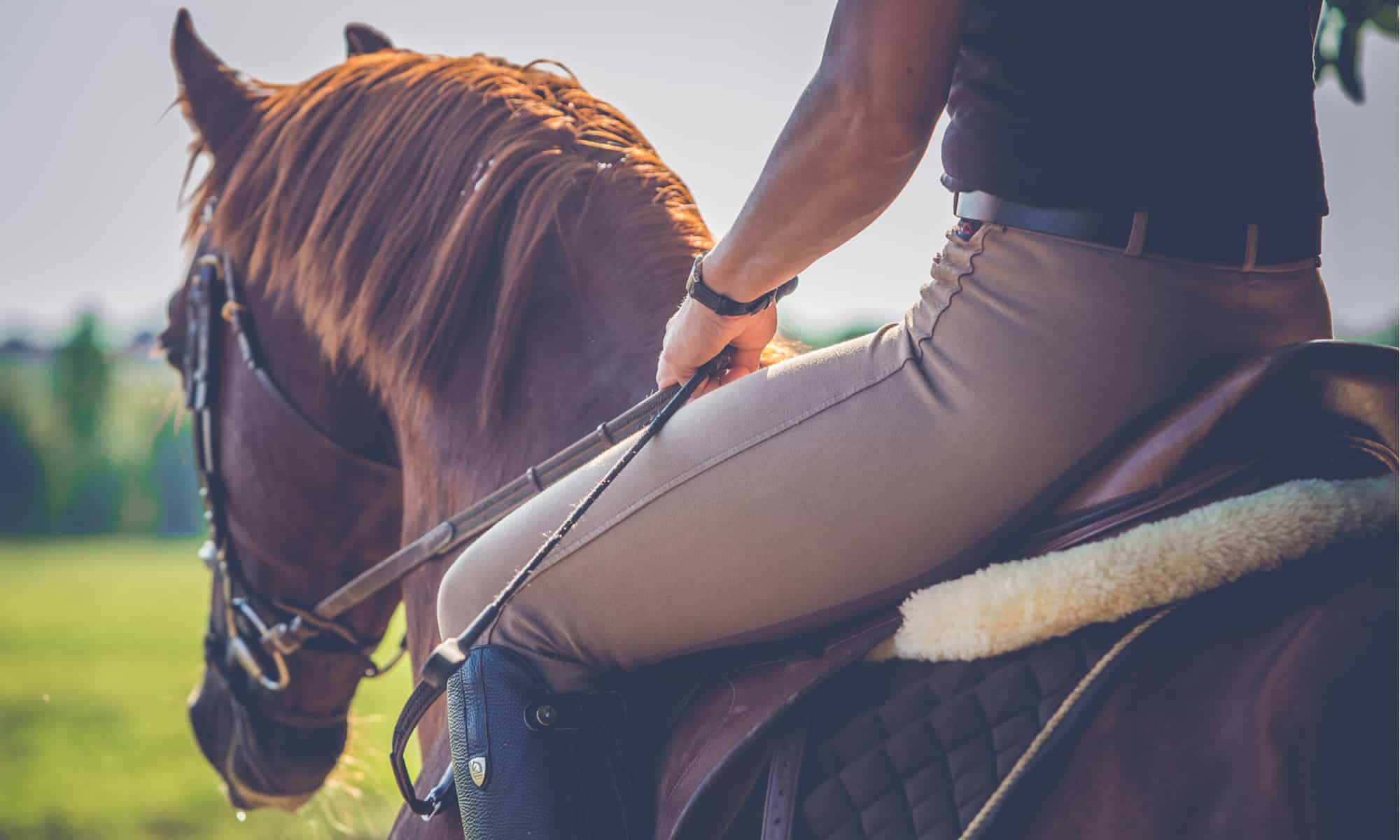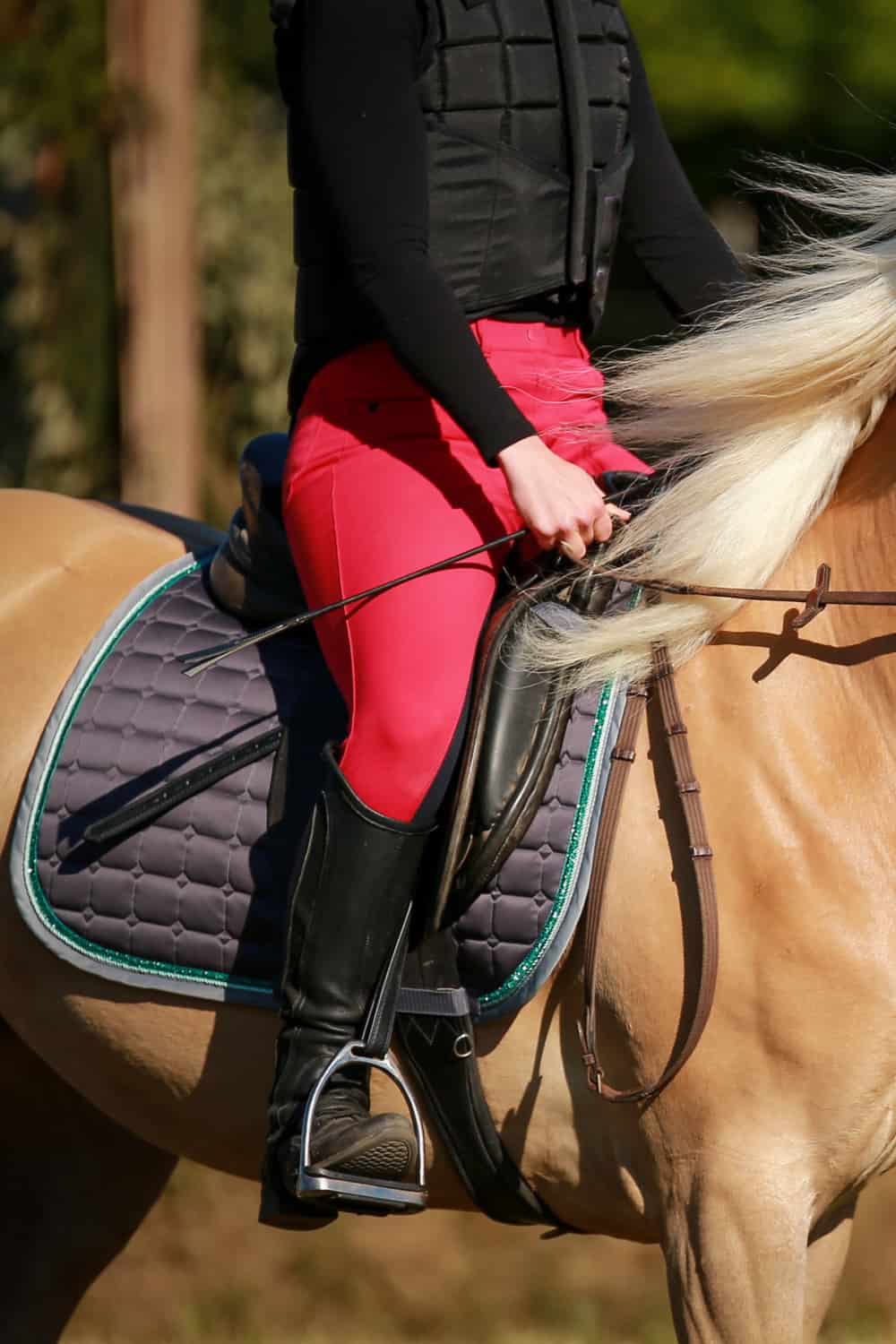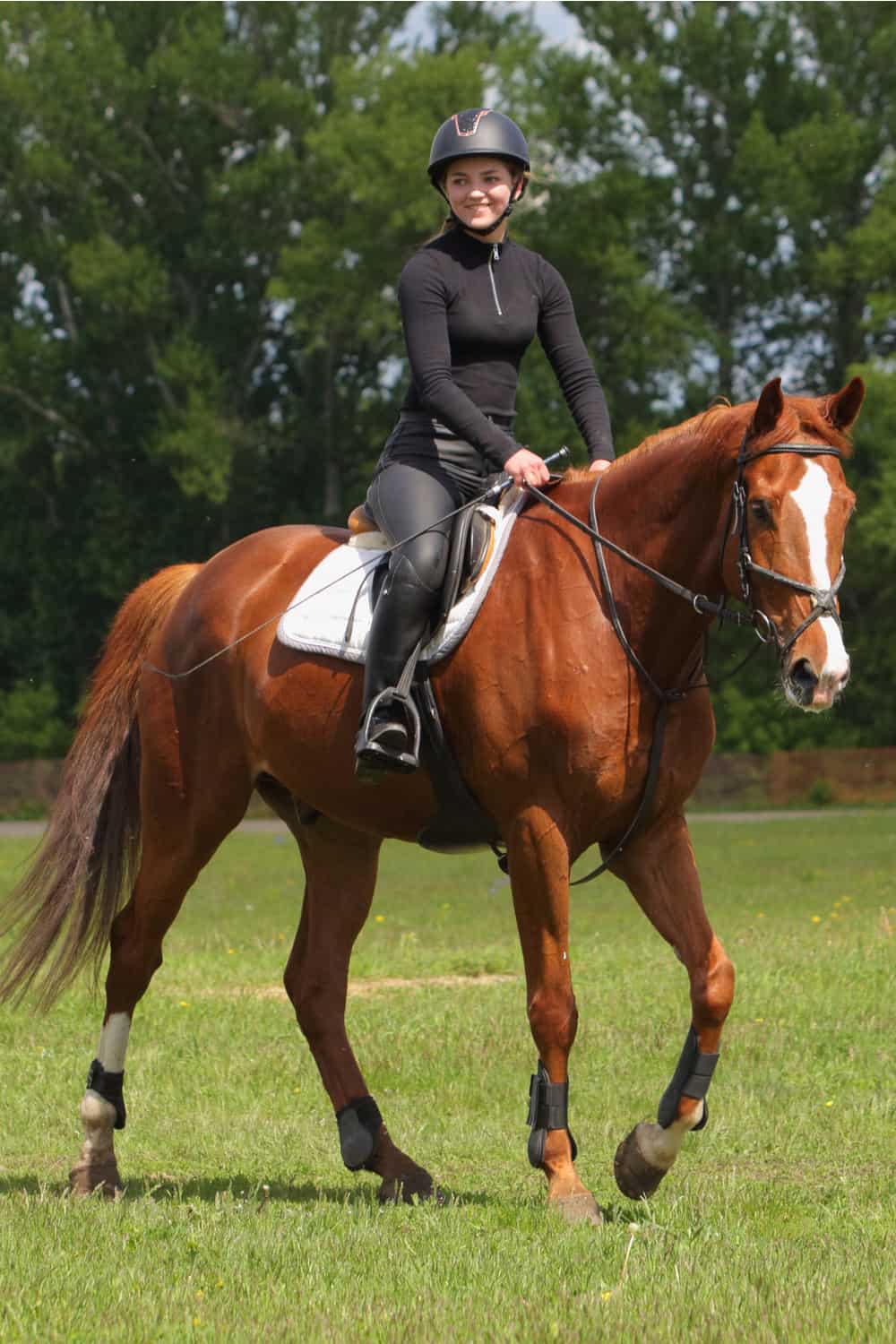If you are new to trotting a horse, you will notice how bouncy and uncomfortable the experience can be. Yet, horseback riding should be enjoyable for both you and your equine pal. One way to improve your experience and make trotting more fun is to post on your horse.
Posting is sitting and rising with the two-beat rhythm of a trotting horse. By mastering the post, you will bounce less, take the stress off your horse’s back, and improve his balance.
For someone new to horseback riding, posting might sound difficult. But, once you understand the dynamics of the trot, you will quickly pick up the correct sit and rise rhythm. In this article, I will explain some trotting basics and show you how to post on a horse like a pro. Read on to find out more!
Step-by-Step Guide on How To Post On a Horse
Follow these steps to master how to post a horse.
Step 1: Learn trot dynamics
A trot is one of a horse’s natural gaits. Two feet rise off the ground when a horse trots while the other two feet touch the ground. For this reason, the trot is a two-beat gait—which can be verbalized as “one-two, one-two.”
When trotting, the horse moves his legs in a distinct diagonal pattern. The right front and left hind legs move together, and the left front and right hind legs do the same. When posting, you should rise from the saddle when the outside front leg moves forward and sit when the leg moves back.
While the trot dynamic and leg diagonals are important, don’t get too caught up in them. You simply need to understand the basic leg movement when a horse trots for you to mimic the rhythm when posting. So don’t let “wrong diagonals’’ and “correct diagonals’’ get you confused and distract you from your goal, which is to master your hip movements and maneuver the reins.
Step 2: Ensure your stirrups are the correct length
Your stirrups will come in handy, helping you stay balanced as you post trot your horse. That said, you can’t depend on the stirrups only to propel you forward and back, which is another beginner faux pas.
As I have explained further down in this article, you will use several muscles to post correctly, but the inner thigh muscles will do the most work.
In addition to positioning your legs properly, it is also important to have the right length stirrups. If your stirrups are too short, you might propel yourself to either side of the horse instead of launching yourself forward. If they are too long, you might find it hard to rise from the saddle and glide forward.
Ideally, a good length for your stirrups lets you stand 4 to 6 inches from your saddle. Check out this video for tips on how to adjust stirrups correctly.
Step 3: Practice proper hand positioning
Posting is as much about balance, control, and correct motion as it is about how you communicate with your horse via the reins. Improper handling of the reins can lead to fatigue in your hands and shoulders. Worse still, you might end up hurting your equine pal.
To post successfully, maintain light contact with the horse’s mouth. Practice holding the reins with your palms facing up and the ropes resting lightly in your hands. Keep your elbows slightly removed from your body as you glide back and forth in your saddle’s seat.
Avoid moving your hands up and down as you post. This wrong hand movement puts pressure on the horse’s mouth and can send confusing signals, which will frustrate your horsy. The only body part you should be intentionally moving is your pelvis/hip area. Your hands should remain as still as possible; you can try resting them on the pommel or saddle horns to maintain the correct position.
Step 4: Position your legs correctly
In addition to adjusting the stirrup length and getting the hand positioning correct, you must also work on your legwork.
When posting, you want to rest your legs on the horse’s midsection. Keep your back and shoulders up, straight, and slightly angled out for proper balance.
Although your legs should, ideally, rest on the horse’s girth, be sure not to hang them loose while tightening your upper thighs. In this incorrect position, you might end up sending your horse a cue that is irrelevant to posting.
Release the pressure on your upper legs for better results and direct this energy to your lower legs. This will allow you to slightly squeeze your calves against the horse’s girth for correct trotting.
Step 4: Let yourself feel the two-beat dynamic
Once you get your positioning right, you will be ready to use your knowledge of trot dynamics to start posting on your horse.
Start trotting your horse and focus on the two-beat rhythm. For someone new to posting, I recommend starting from the sitting position and allowing the horse’s trot to move through you.
Alternatively, if you find the trot too bouncy, you can use your stirrups to stand. Remember, don’t pull on the reins to stand or propel yourself forward. Instead, you can maintain your balance by grabbing onto the mane or holding on to the saddle horn.
Once you catch onto the two-beat rhythm, you will find it easier to glide back and forth at the horse’s cue, and before you know it, you will be posting. Well, you might not be doing it perfectly, but you’d be off to a great start.
A trick you could use to get into the rhythm is to count aloud the two-beat sequence: “one, two, one, two.” Verbalizing the trotting sequence allows you to focus on the rhythm and notice when you post offbeat.
Pro Tip: If you find it difficult to catch your balance on a trotting horse, ask someone/a helper on the ground to lunge the horse. You can then focus on perfecting your post instead of worrying about your balance. In this case, you can stop using the reins and instead use the horse’s mane or saddle horns for support.
Step 5: Practice rising out of your seat
You are now ready to jump right into posting. When the horse’s front right side leg moves forward, swing your pelvis forward and up. This motion will lift you from the saddle.
As you swing forward, lean toward the horse’s back at a 30-degree angle. In this position, you can keep your eyes focused forward, body balanced, and movement more organic as you are more in tune with your horse.
A mistake beginners make is pulling the reins back tightly and using their legs to rise from the seat. Supporting yourself with the reins can seriously hurt your horse’s mouth, resulting in a hard mouth.
To post correctly, you will need to simultaneously engage your core abdominal, thigh, back, glutes, and leg muscles. Avoid relying on just one muscle group as it might result in injury or cause excessive stress on the horse’s back.
Maintain light contact with the horse’s mouth, squeeze your inner thigh muscles and keep your knees down to propel yourself forward.
Step 6: Sit back down in the saddle
As soon as you complete your forward and upward motion, you will need to swing your pelvis back to sit down in your seat. You will not fully sit into your saddle; rather, to post, you will lightly touch your seat with your backside.
This light sit-down will be swiftly followed by the rising motion and so on and so forth. Eventually, if you post correctly, you should move forward and backward seamlessly. The entire movement should mimic your horse’s two-beat trot, and it should be as though you are gliding back and forth in your seat as opposed to jumping up and down a typical rookie mistake.
Congratulations! You just learned how to post on a horse. Remember, practice makes perfect. I have included a few quick tips you can use to improve your posting experience:
Extended Tips
- Riding on the correct diagonal can be difficult to remember when you are new to posting. An easier way to remember when to sit up and stand is to use the adage “Rise and fall with the leg on the wall.’’
- Instead of using your body power to lunge forward and backward, allow the horse’s movement to rock you back and forth for a smoother, fun, and more organic posting.
- Practice complete body relaxation. Successful posting requires you to rock your pelvic/hip area effortlessly. As such, your ankle, hips, and knees should be relaxed at all times.
Summary
Whether you’re riding style is Western or English, posting is a beneficial skill to learn. You can save yours and your horse’s back, cover more ground when trotting, and instill confidence in a young horse. As you can see in our guide, learning how to post a horse is all about getting the body positioning right and riding with, instead of against, the horse’s two-beat trot rhythm. With regular practice, you will be trotting and posting like a pro in no time.










